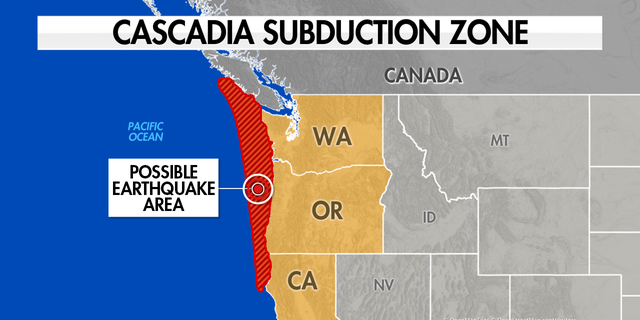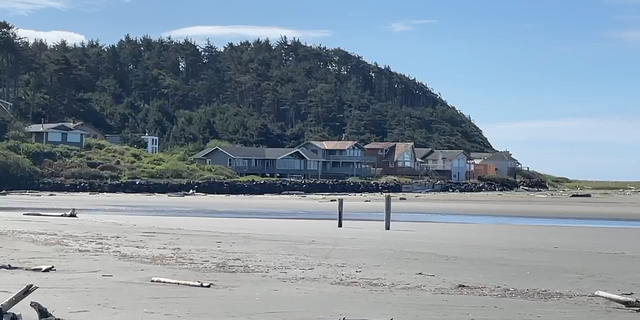Researchers make discovery off Pacific Coast to better understand earthquakes: ‘Messengers from the deep’
Pacific Beach, WA – Researchers at the University of Washington have made a crucial discovery to help them better understand earthquake zones off the West Coast.
The findings give them more insight into a part of the country that could produce a big earthquake.
“It provides a more fuller(sic) understanding of the fundamentals, the foundational understanding of how subduction zones work,” said UW Assistant Professor Evan Solomon.
Solomon and other researchers are studying subduction zones – the areas underwater that produce earthquakes when tectonic plates collide.
CALIFORNIA EARTHQUAKES SHAKE, WAKE NEARBY RESIDENTS: REPORTS
The research team discovered warm liquid coming from the seafloor off the coast of Oregon, which gives them a better idea of how tectonic plates lock into place between large earthquakes.
“They’re like messengers from the deep,” Solomon said. “They’re providing us a pretty well intact, pristine sample, of what the fluids are like in the plate boundary at these depths.”
The discovery happened along the Cascadia Subduction Zone – a fault line more than 600 miles long that stretches from southern British Columbia to northern California.

SMALL EARTHQUAKES REPORTED NEAR CALIFORNIA’S OAKLAND ZOO
Solomon hopes the research will help improve earthquake forecasting down the line.
“This new finding does provide new information for our models of how subduction zones work,” Solomon said. “And those models eventually can be potentially used for forecasting of earthquakes.”
The Pacific Coast is approximately 100 miles from the Cascadia Subduction Zone, and that means coastal towns would quickly feel the impact from an earthquake.
“As soon as the shaking stops, we have about anywhere from 15 to 30 minutes to get to high ground before the first tsunami waves will hit,” said Scott Cameron, a geologist from Seabrook, Washington.
EARTHQUAKES SHAKE HAWAII’S MAUNA LOA VOLCANO DURING UNREST, CAUSE MINOR DAMAGE

Coastal towns pay close attention to earthquake threats and need the most up-to-date information to prepare.
“The key is to communicate what we do know,” Cameron said. “Right now, we have models and an understanding based on the best available science we have. And we need to make sure that gets out to the public.”
There is a 15% chance that a major earthquake will take place in the Cascadia Subduction Zone over the next 50 years. If it happens, experts believe it could be comparable to the 2011 earthquake and tsunami in Japan that killed nearly 20,000 people.
Read the full article Here


